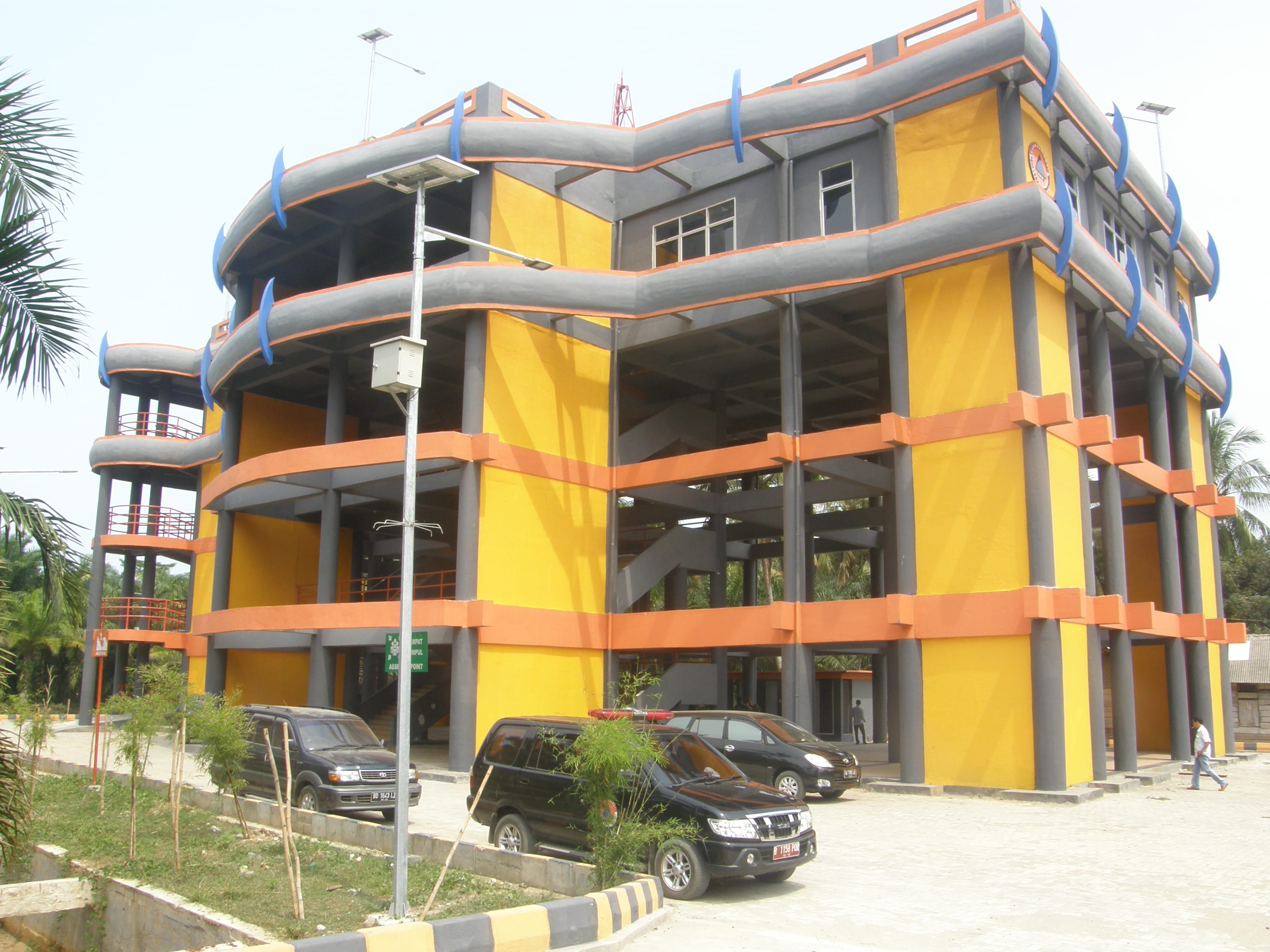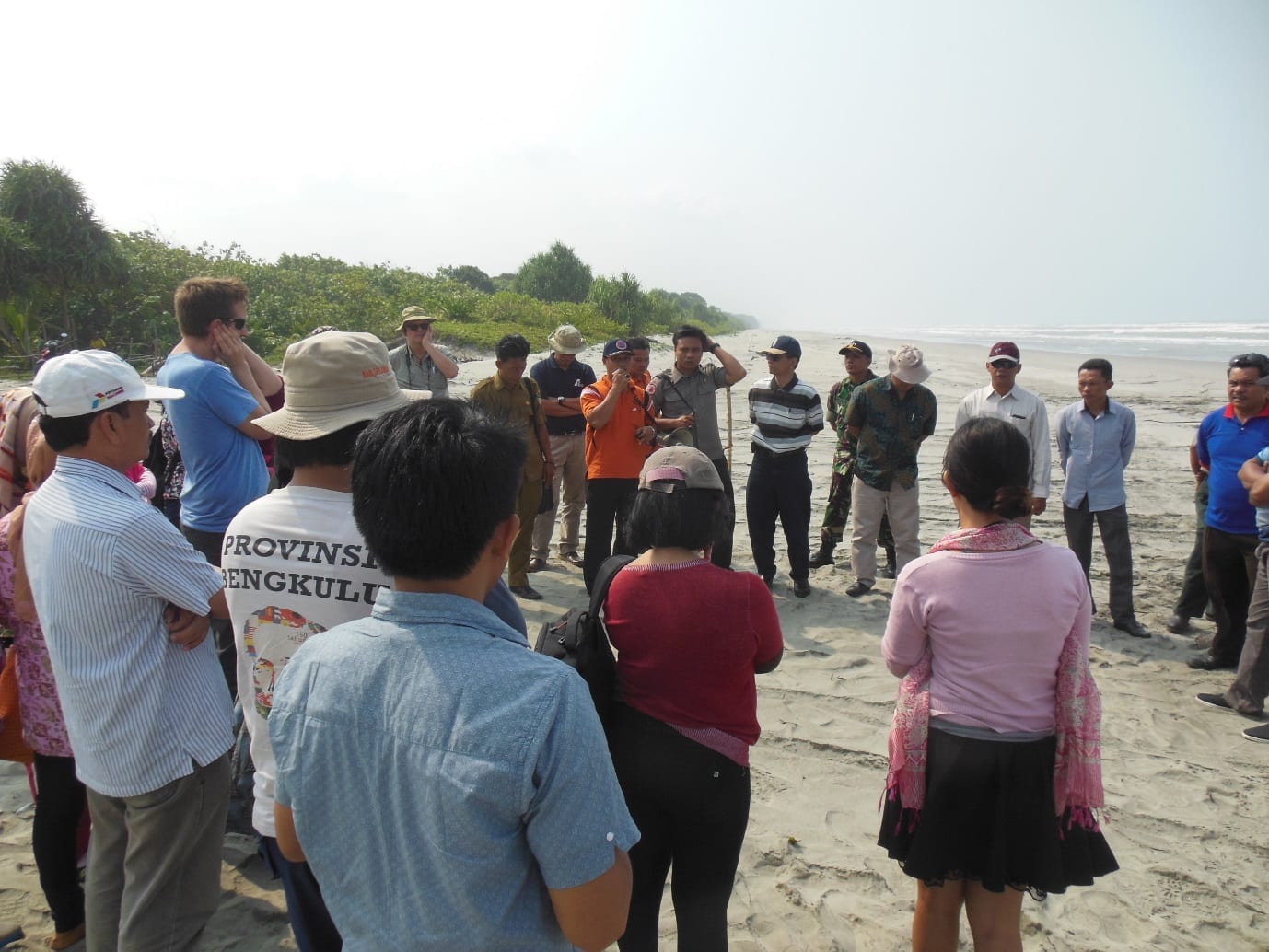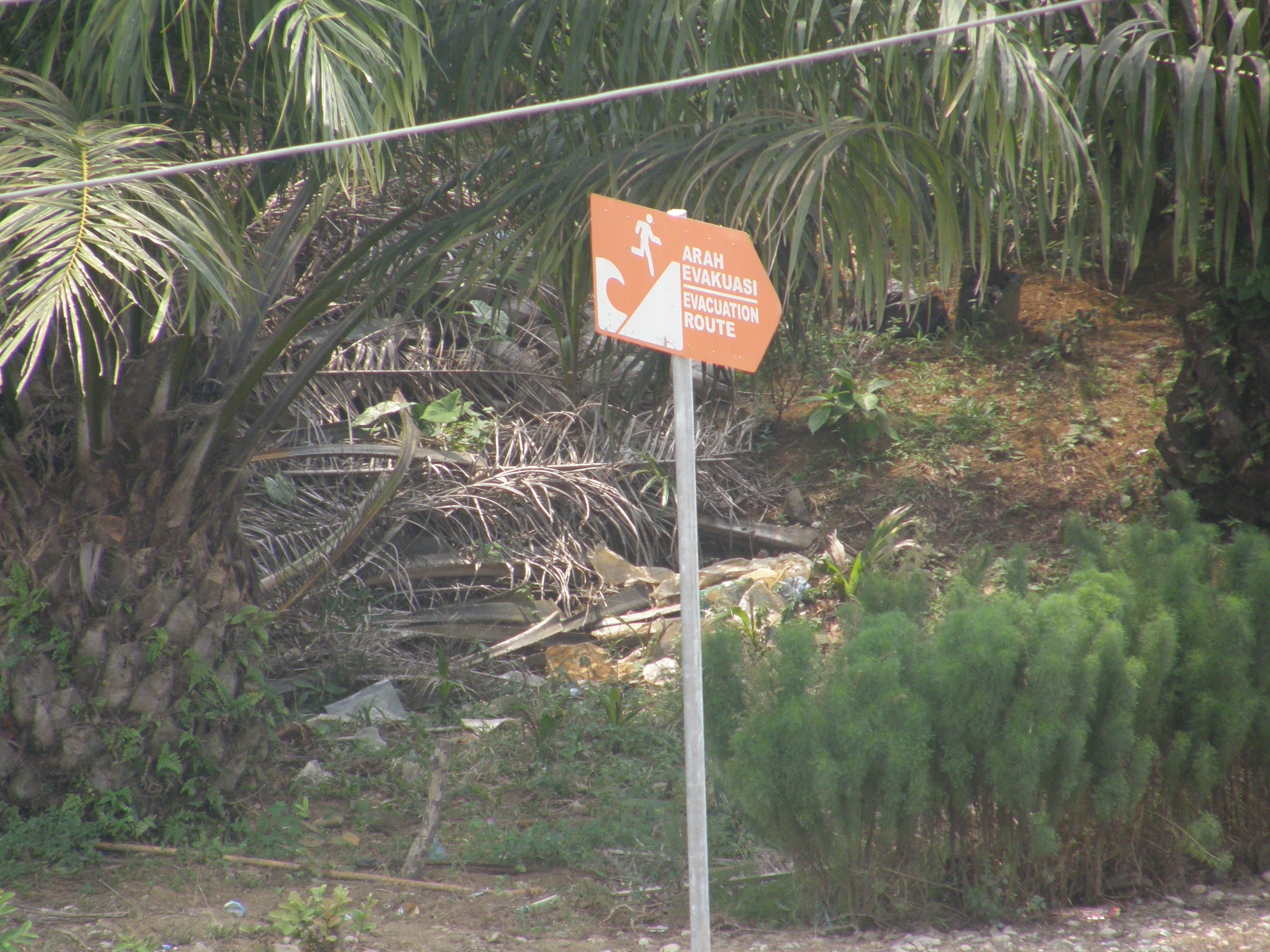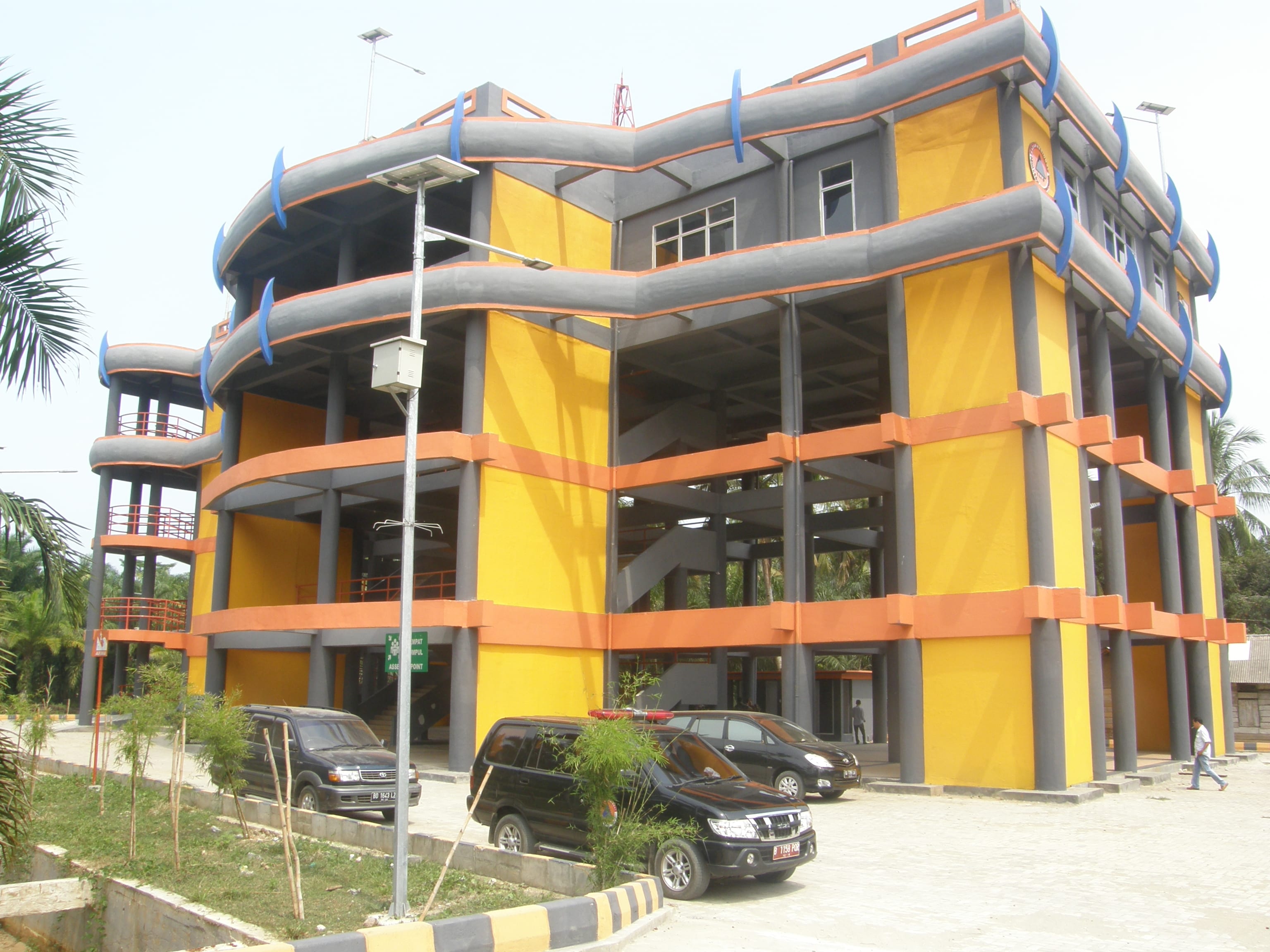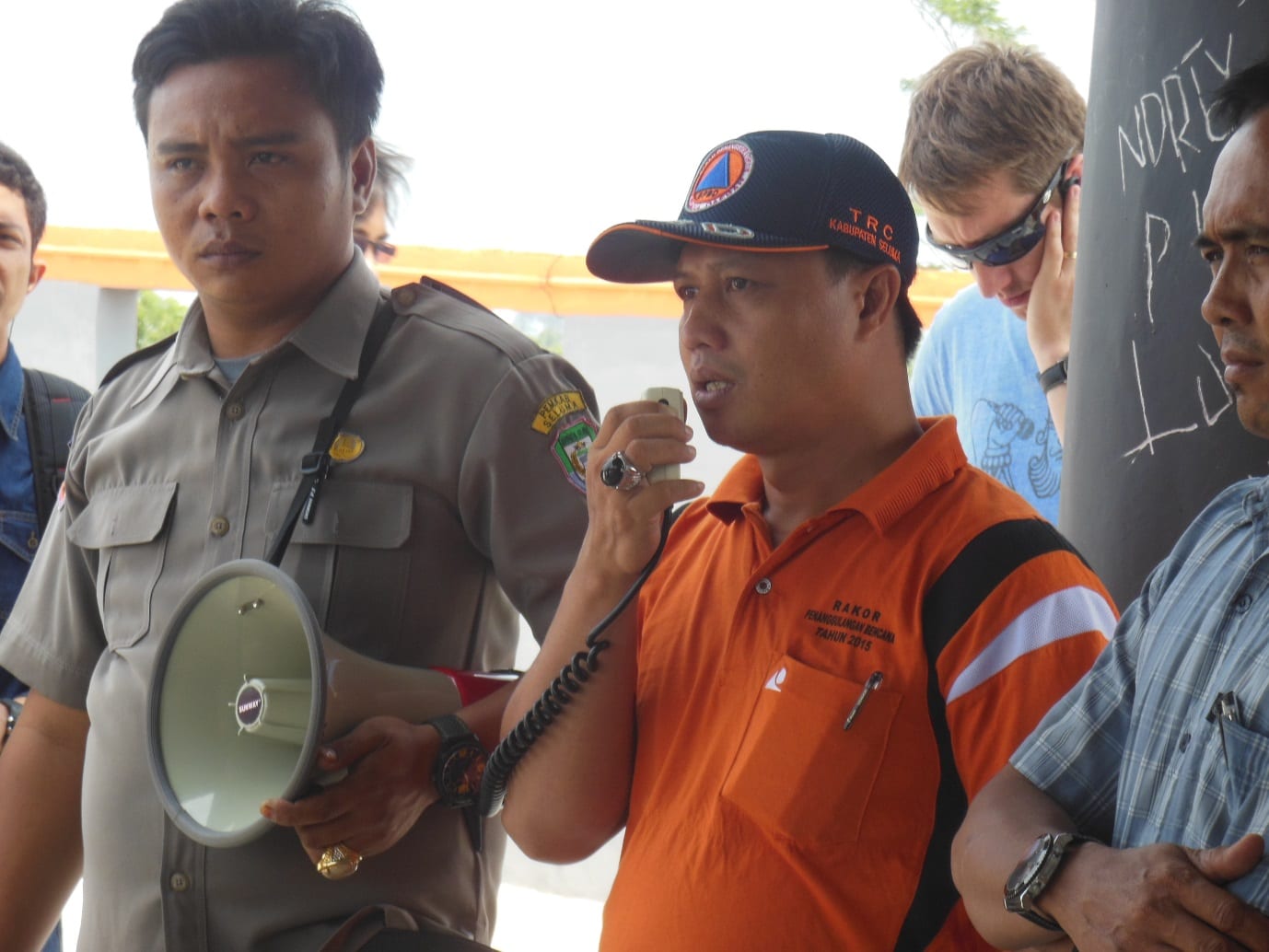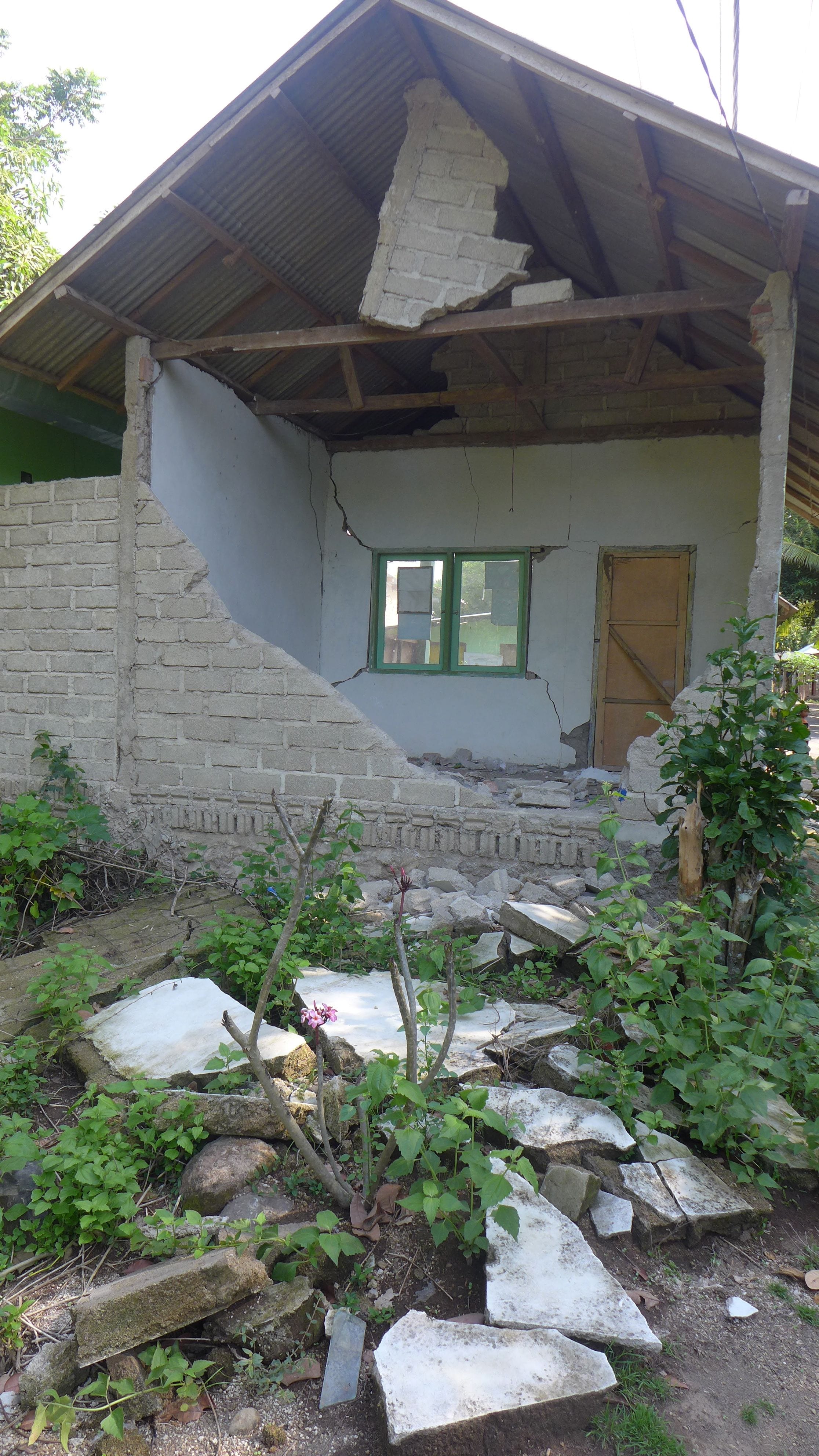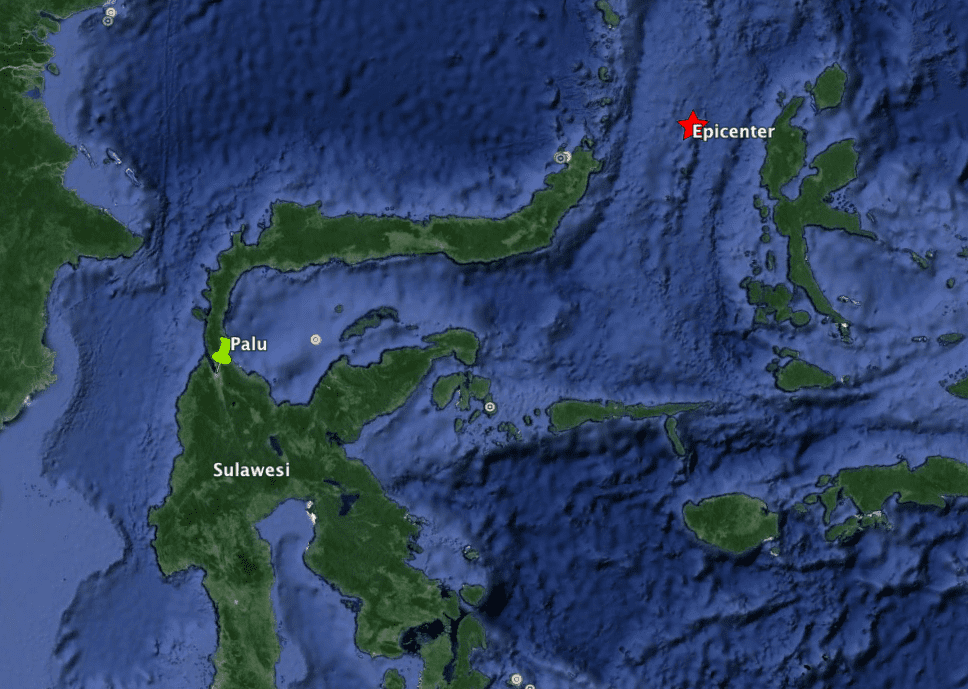On Sunday 5 August 2018 at 7.46 pm (local time) a powerful, magnitude 6.9, earthquake hit the Indonesian tourist island of Lombok, killing at least 250 people and caused damage in neighbouring Bali.
This was the second deadly quake in a week to hit Lombok. A July 29 quake killed 17 people and damaged hundreds of houses, some of which collapsed in last Sunday evening’s quake, killing those inside. Poor construction techniques used for houses is a big issue for Indonesia and requires significant education and capacity building amongst the community.
National Disaster Mitigation Agency spokesman Sutopo Purwo Nugroho told a news conference that damage was “massive” in northern Lombok, and in several districts, more than half the homes were destroyed or severely damaged.
Although none of the New Zealand based team members are in Indonesia currently, Michele Daly (Project Director of StIRRRD) said that Mataram City on Lombok Island is in the thick of the earthquake’s impact zone. Mataram City is one of the StIRRRD case study cities and is in the West Nusa Tenggara province.
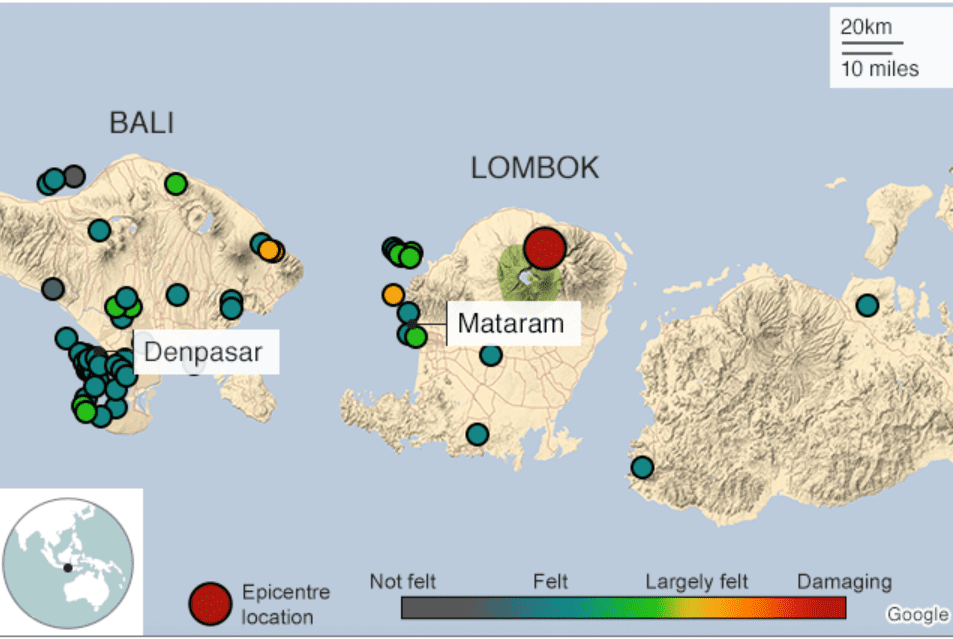
Image: Lombok and Mataram City in relation to the quake’s epicentre. Tremors were felt across the neighbouring island of Bali (Source: BBC)
On hearing about the quake, the team’s immediate concerns turned to the people in Indonesia, and especially those who the StIRRRD team work closely with within the local Emergency Agency and other government Agencies and the University of Mataram. Due to the quake’s size, many of them and their families have been badly impacted.
Staff from Gadjah Mada University (UGM) in Yogyakarta visited Mataram City to undertake building damage and community vulnerability assessments, and sent through photos that show the extent of damage around the University of Mataram’s campus, see below:
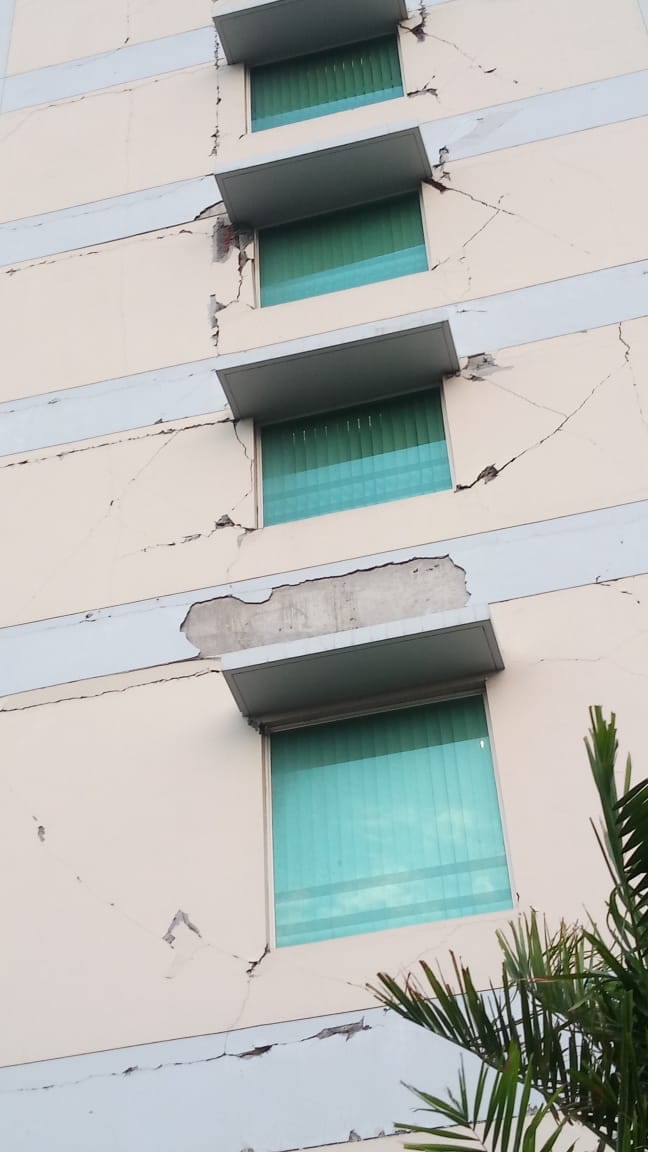
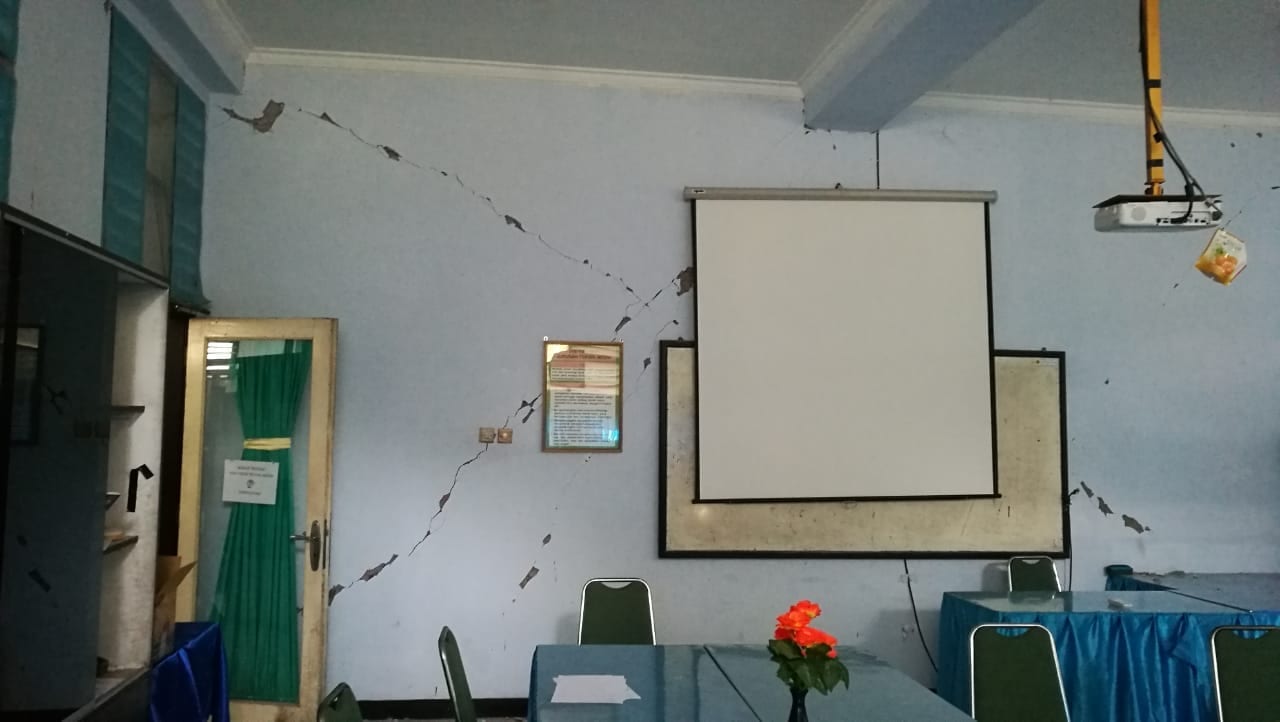
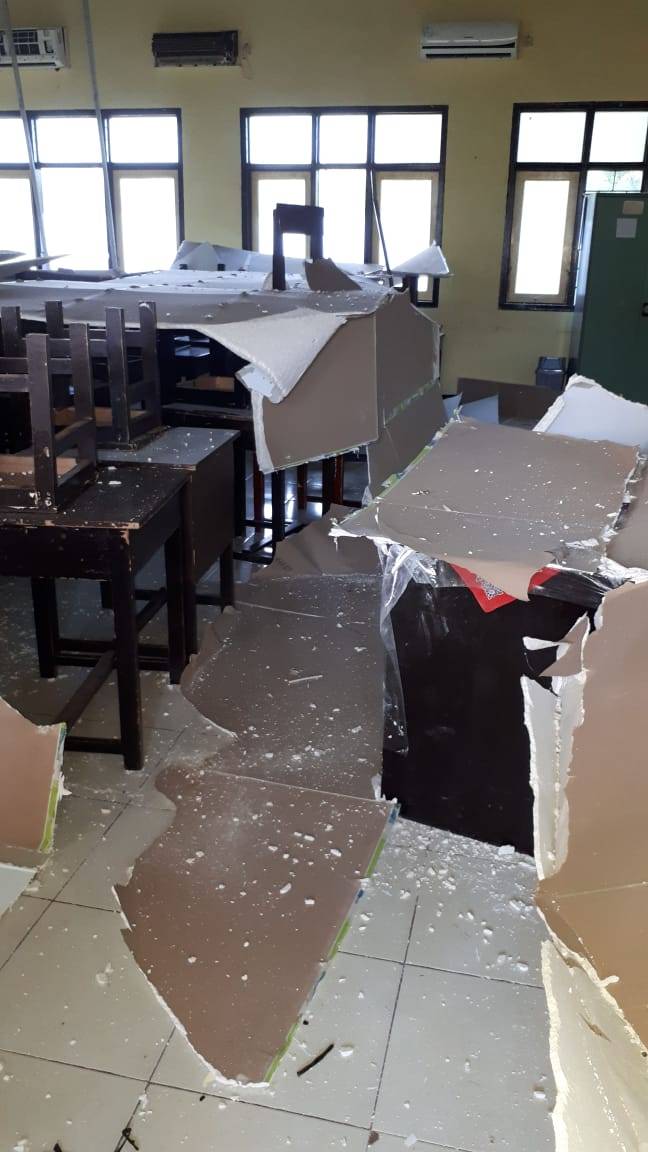
Mataram City is at risk from a range of natural hazards including floods and extreme weather, drought, landslides volcanic eruptions and earthquakes, and due to high population density and poor construction methods, large scale events affect many people.
Phil Glassey, a Disaster Risk Reduction Scientist at GNS Science, reflected on the StIRRRD team’s visit to Gol Village in North Lombok in 2014. The team observed several houses that had been damaged or were being rebuilt after a magnitude 5.1 earthquake the year before, so the impacts from the recent quakes will take a long time for communities to recover from.
While a tsunami was not observed following last Sunday’s quake, this is a potential hazard due to the Mataram’s proximity to the ocean. The Lombok Strait is located on the City’s western margin and the Sunda Trench, to the south of Mataram, experiences large earthquakes capable of generating tsunamis.
Dr John Ristau, a seismologist at GNS Science comments:
The magnitude 6.9 Loloan, Indonesia earthquake was a reverse faulting earthquake at a depth of 31 km.
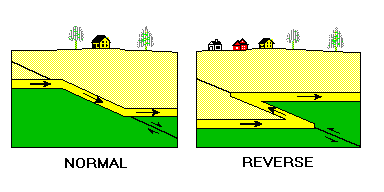
Image Credit: California geological Survey
In this area the Sunda plate to the north subducts beneath the Indonesian Arc, and the mechanism of the earthquake is consistent with reverse-faulting on the Indonesian Arc thrust.
The Pacific Island arc from Samoa to Indonesia is one of the most seismically active regions on Earth, and earthquakes of this size are not unusual. In the region within about 500 km of the epicentre there have been at least 15 earthquakes of magnitude 6.5 and above in the last 10 years.
Earthquakes of this size will produce significant aftershock activity. However, plate interface earthquakes tend to have less vigorous aftershock sequences than shallow crustal earthquakes of comparable size.


